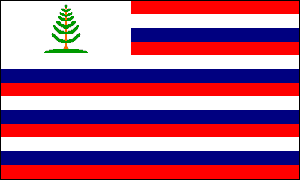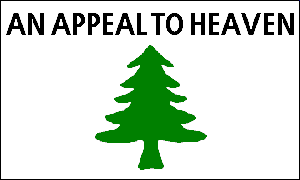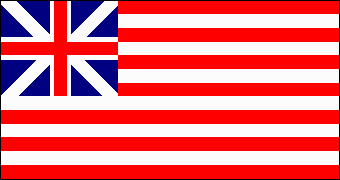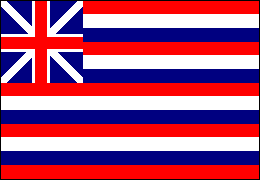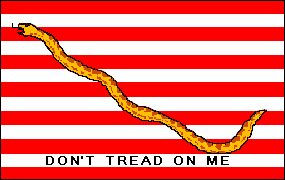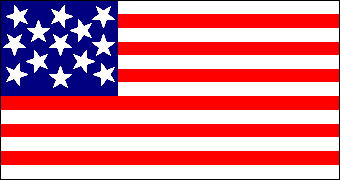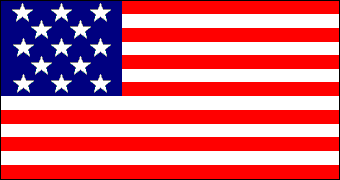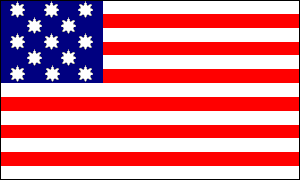AMERICAN NAVAL FLAGS
REVOLUTIONARY WAR • 1775-85
American naval flags of the Revolutionary War were in no way standardized, though eventually the Stars & Stripes came to be the recognized war ensign of the United States. Besides the various flags authorized by the Continental Congress, there were many others adopted by naval commanders or by the legislatures of individual states. A common feature of many of these flags was the field of thirteen stripes symbolizing the unity of the Thirteen Colonies.
|
NEW ENGLAND NAVAL ENSIGN • 1775 |
WASHINGTON'S CRUISERS FLAG • 1775 |
|
The ensign known as the Washington's Cruisers Flag was first flown by two floating batteries that were placed by the Americans in the Charles River during the siege of Boston. Later it was also flown by a number of small armed vessels of "The United Colonies of North America," commissioned under Washington's authority as Commander-in-Chief of the Continental Army. The artistic rendition of the tree and the exact wording of the motto varied from flag to flag. In April 1776, the Massachusetts legislature made this flag official for the naval forces of the state. A similar flag, with no motto, is still the official ensign of the Commonwealth of Massachusetts. |
|
|
THE CONTINENTAL COLORS • 1775-77 |
ENSIGN OF THE BRIG LEXINGTON • 1776 |
|
The brig Wild Duck was purchased by the Continental Congress, refitted, armed and commissioned as Lexington in 1776. Under the command of Captain John Barry, she enjoyed some success against British shipping before being captured by HMS Alert in 1778. The Lexington's ensign was a variant of the Continental Colors, with stripes of red, white and blue. |
|
|
FIRST NAVY JACK • 1775 |
|
|
|
|
|
|
|
|
In 1777, the Continental Congress passed an act establishing a national flag for the United States of America. The flag law specified a field of thirteen stripes and a blue canton or "union" with thirteen stars, but no precise details as to proportions, color shades or design were provided. Accordingly, early versions of the Stars & Stripes varied widely in design, with flag makers following their own fancies regarding the order of the stripes, the arrangement of the stars and the flag's overall proportions. The two flags shown above represent common variants, as do the Alliance and Serapis ensigns, below. |
|
|
The ALLIANCE ENSIGN |
THE SERAPIS ENSIGN |
|
The Serapis Ensign was hoisted on board the captured British frigate HMS Serapis after the battle between Serapis and the American ship Bonhomme Richard, Captain John Paul Jones commanding, off Flamborough Head, Yorkshire, on 23 September 1779. It was during this engagement that Jones, when asked by the British captain if he had struck his colors, gave his famous reply: "Struck, sir? I have not yet begun to fight!" Bonhomme Richard herself was so badly damaged that she sank with colors flying. |
|
